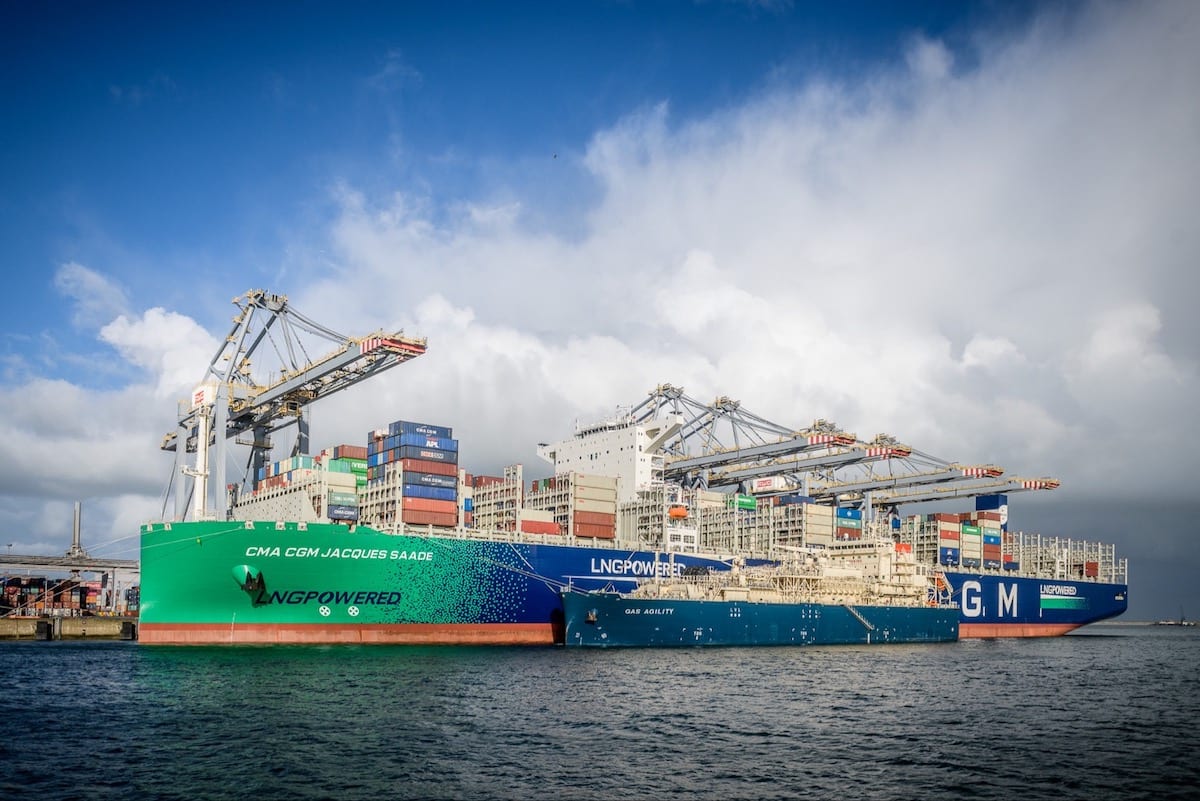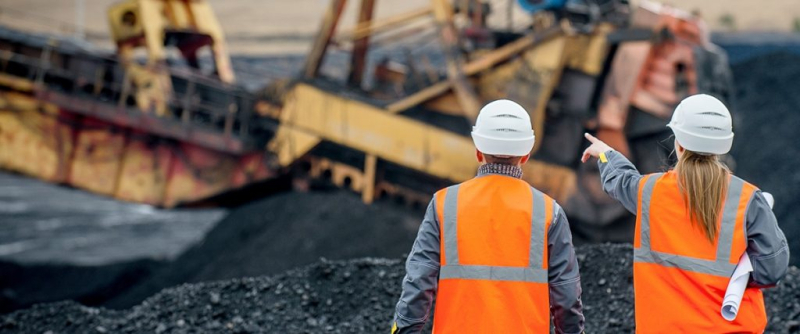
The Gas Agility conducts LNG bunkering operations alongside the gas-powered CMA CGM Jacques Saad at the Port of Rotterdam. Photo courtesy CMA CGM
LNG-fueled vessels are rapidly emerging as the frontrunner in alternative marine fuels, despite representing just a fraction of the global fleet.
A recent report from industry coalition SEA-LNG revealed that LNG-powered vessels now comprise over 2% of the global fleet, a percentage that is set to increase to 4% by vessel numbers or 6% by deadweight tonnage (DWT) when considering current order books.
The current fleet of approximately 2,200 LNG-fueled vessels and carriers, while only accounting for a small portion of the world’s deep-sea vessels, is showing unprecedented growth compared to other alternative fuel options, according to SEA-LNG.
Peter Keller, Chairman of SEA-LNG, says that the current LNG-capable fleet consists of “600 LNG capable ships afloat with a further 600 on order,” alongside 1,000 LNG cargo carriers and bunker vessels. This stands in stark contrast to just 54 methanol vessels and 2 ammonia vessels currently operating.
LNG’s safety record has been particularly impressive, with nearly six decades of incident-free operations. The fuel boasts several advantages, including easy transportability, minimal environmental risks, low flammability, and non-toxic properties. However, environmental groups have raised concerns about its carbon dioxide and methane emissions.
“When compared to traditional fuels, LNG is more of a teenager with all the growing pains, challenges and victories associated with adolescence. But it is maturing all the time as the market continues to grow, new build orders continue to rise, and the LNG pathway with biomethane and eventually e-methane produced from renewable hydrogen, gains acceptance globally,” said Keller.
Despite strong investment in LNG-fueled vessels, industry experts warn of a critical infrastructure gap. The sector requires significant investment in landside facilities, including liquefaction near ports, bio and synthetic methane production, and bunkering capacity. This supply-side challenge is becoming increasingly pressing as the fleet continues to grow.
“While investment in newbuild LNG-fuelled ships is robust, we need to see the same for bunker vessels, supply and liquefaction infrastructure. As the LNG pathway continues to mature and the use of liquefied biomethane and eventually e-methane increases, the delivery of the fuel to vessels must be assured and the investment gap closed,” noted Keller.
Looking ahead, industry leaders anticipate continued growth through 2025 and beyond. The pathway includes transitions to liquefied biomethane and eventually e-methane, though success depends heavily on closing the infrastructure investment gap.
“As LNG and the pathway to net zero ascends to adulthood in the coming years, the rewards that our environment reaps will be significant and realistic – given how well we have matured and how conscious we were of what needed to be accomplished,” Keller concluded.





























